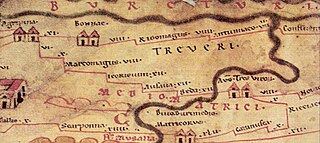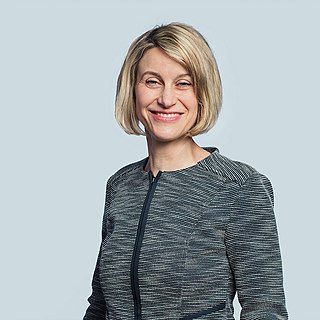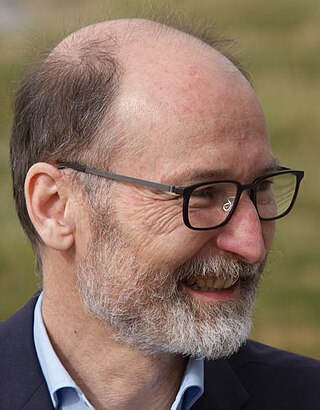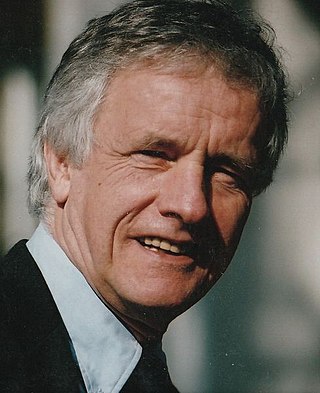
Hayo Vierck (born 5 August 1939, Bentheim; d. 16 March 1989, Reichenau Island) was a German archaeologist, who made a distinguished contribution to German Early Medieval archaeology through research in the industrial arts.[ citation needed ]

Hayo Vierck (born 5 August 1939, Bentheim; d. 16 March 1989, Reichenau Island) was a German archaeologist, who made a distinguished contribution to German Early Medieval archaeology through research in the industrial arts.[ citation needed ]
Hayo Vierck took an early interest in the history and archaeology of his homeland while at secondary school, and also had early contact with Haithabu. After taking his school certificate examinations in 1962 in Plön, Vierck studied Pre- and Proto-history with the subsidiary subjects of Classical Archaeology and Folklore in Munich and obtained his doctorate in 1969 under Joachim Werner with a dissertation on North English and West Scandinavian Costume Accessories in the 5th and 6th Centuries. Finishing that, he undertook a second research project in Oxford, which culminated in his attainment of Bachelor of Letters (B. Litt.) in the Department of European Archaeology. He became Fellow of the External research unit 7 'Medieval research' of Münster University from 1969 until 1985, and Professor of 'Art and Craft in the Early Middle Ages' (Kunst und Handwerk im Frühmittelalter) at the Seminar for Protohistory and Early History. His special research strengths were his Work of Eligius [1] and the Imitatio Imperii. [2] [3]
He was married to Sigrid Vierck, who wrote a dissertation on the Ægis, Die Aigis: Zu Typologie und Ikonographie eines Mythischen Gegenstandes [4] and in 2008 was elected Abbess of the Lutheran conventual monastery of Walsrode Abbey.

Fortunato Santini was an Italian priest, composer and music collector.

Hans-Georg Stephan is a German university professor specializing in European medieval archaeology and post-medieval archaeology.
Joachim Werner was a German archaeologist who was especially concerned with the archaeology of the Early Middle Ages in Germany. The majority of German professorships with particular focus on the field of the Early Middle Ages were in the second half of the 20th century occupied by his academic pupils.

Pingsdorf ware is a high fired earthenware, or proto-stoneware, that was produced between the late 9th and 13th century in different pottery centres on the Eastern margin of the Rhineland as well as the Lower Rhine region. Characteristic features of vessels in Pingsdorf ware are a yellow-coloured fine sand-tempered sherd and a red painting. It is archaeologically evident within various Medieval settlements of North Western Europe and thus represents an important chronological marker for the Medieval archaeology.
Horst Wolfgang Böhme is a German archaeologist with a focus on Late Antiquity / Early Middle Ages and research into castles.

The Soest Feud, or Feud of Soest, was a feud that took place from 1444 to 1449 in which the town of Soest claimed its freedom from Archbishop Dietrich of Cologne (1414–1463), who tried to restore his rule. The town of Soest opposed this attempt on 5 June 1444 by accepting a new suzerain, John I, the Duke of Cleves-Mark, who guaranteed the town its old rights as well as new ones. As a result Emperor Frederick III imposed the imperial ban on the town. The victory of the town meant that Soest had de facto more freedom than a free imperial city until it was annexed by Prussia, but at the same time it had to forfeit its economic power because it was now an enclave within Cologne's territory.

The Roman road from Trier to Cologne is part of the Via Agrippa, a Roman era long distance road network, that began at Lyon. The section from Augusta Treverorum (Trier) to the CCAA (Cologne), the capital of the Roman province of Germania Inferior, had a length of 66 Roman leagues. It is described in the Itinerarium Antonini, the itinerarium by Emperor Caracalla (198–217), which was revised in the 3rd century, and portrayed in the Tabula Peutingeriana or Peutinger Table, the Roman map of the world discovered in the 16th century, which shows the Roman road network of the 4th century.

The Torslunda plates are four cast bronze dies found in the Torslunda parish on the Swedish island Öland. They display figures in relief, representing what are presumed to be traditional scenes from Germanic mythology. The plates are moulds designed for production rather than display; by placing thin sheets of foil against the scenes and hammering or otherwise applying pressure from the back, identical images could be quickly mass-produced. The resulting pressblech foils would be used to decorate rich helmets of the sort found at Vendel, Valsgärde, and Sutton Hoo. Two of the plates may have been made as casts of existing pressblech foils.

Sunhild Kleingärtner is a German historian and archaeologist, specialising in maritime history and maritime archaeology.
Udelgard Körber-Grohne was a German archaeobotanist.
Wolfgang Hirschmann is a German musicologist.
Egon Voss is a German musicologist, who is particularly known for his contributions to Richard Wagner research.
Ellen Widder is a German historian.
Klaus Hortschansky was a German musicologist.
Christoph von Blumröder is a German musicologist.

Sebastian Brather is a German medieval archaeologist and co-editor of Germanische Altertumskunde Online.

Gerd Althoff is a German historian of the Early and High Middle Ages. He presents himself as a researcher into the "political rules of the game" in the Middle Ages. He has held professorships at Münster, Gießen (1990–1995) and Bonn (1995–1997).
Matthias Untermann is a German art historian and medieval archaeologist.
Ruedi Hagen Keller is a German historian specializing in the history of the early and high Middle Ages. He works mainly on the Ottonian period, the Italian communes, and the culture of writing in the Middle Ages. Keller taught as Professor of Medieval History at the University of Münster from 1982 until his retirement in 2002. His collaboration with his colleague Gerd Althoff was particularly fruitful. With their work, Keller and Althoff made a decisive contribution to Münster's reputation in international medieval studies. Keller's research has had a considerable influence on German and international medieval studies since the 1980s and has led to a reassessment of early and high medieval kingship.

Mistislaw, also known as Mstislav, was an Elbe Slavic prince of the Nakonid lineage and ruled over the Obotrites in what is now Mecklenburg and eastern Holstein from 990/995 to 1018.